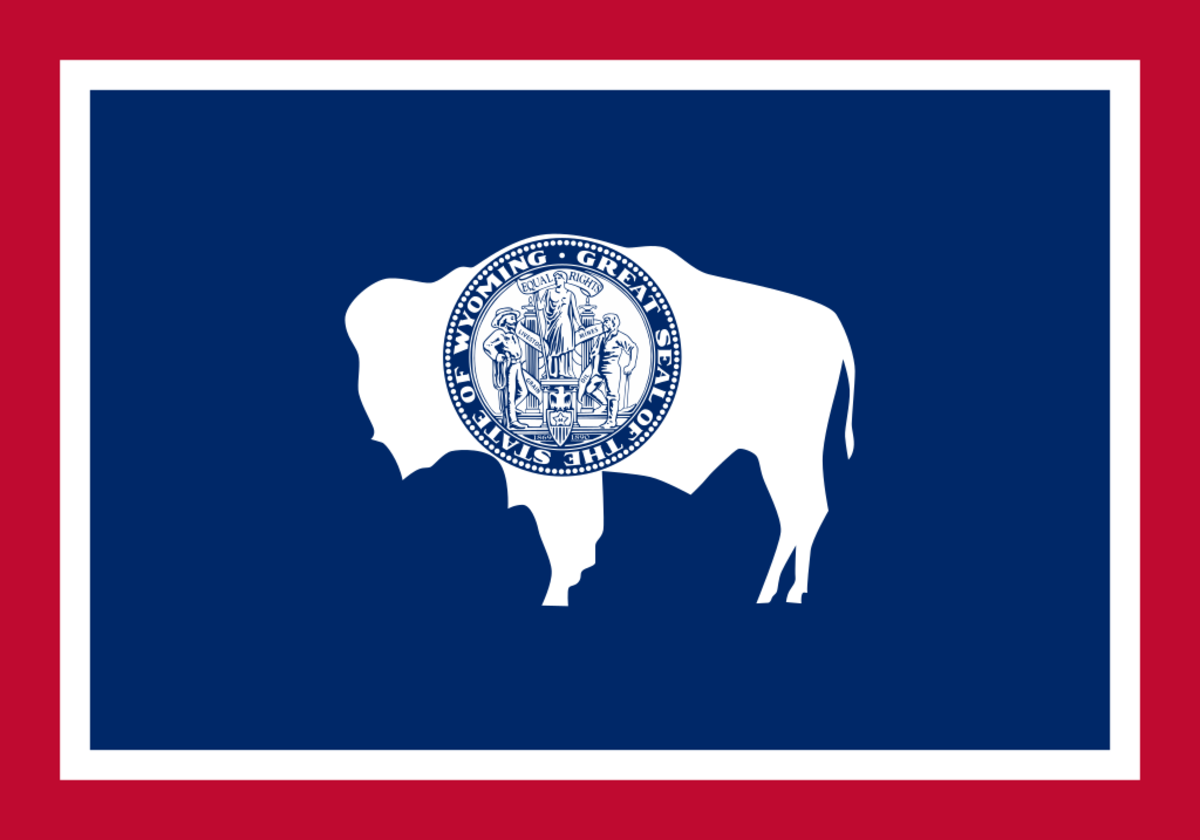Wyoming Medical Malpractice Laws

According to a study conducted by Forbes Advisor in 2022, Wyoming ranks fifth among the states with the most expensive healthcare, with spending figures amounting to $10,296 per capita. Fortunately, data collected by the National Practitioner Data Bank show that there were only 71 reported medical malpractice cases for the same year, which is the eighth lowest nationwide.
A year before, in 2021, Equality State saw a notable change in its medical malpractice laws when legislators voted to abolish the Wyoming Medical Review Panel. This meant that effective July 2022, medical malpractice claims will no longer have to be submitted to a medical review panel. This change became a huge step toward simplifying the legal process.
Medical malpractice is among the most complex areas of personal injury law. That is why it is important for Wyoming locals to learn about the sections of the law relevant to medical malpractice. This article discusses the required elements in establishing a claim, liable parties, the statute of limitations, and the damages a plaintiff can recover from lawsuits.
What Qualifies as Medical Malpractice in Wyoming?
In Wyoming, medical malpractice is a form of professional negligence a healthcare provider commits. If a patient suffers from an injury caused by a medical practitioner’s deviation from the acceptable standard of care for their respective field of practice, they can file a medical malpractice suit. A deviation can be in the form of a direct act, error, or omission while administering medical care.
State law recognizes that certain medical procedures come with inherent risk, which means not all injuries qualify for compensation. When pursuing legal action against a healthcare provider, the injured patient must be able to prove a direct causation between the defendant’s negligence and their own injuries.
Some of the common forms of medical malpractice in Wyoming are:
Failure to promptly diagnose a life-threatening condition, which consequently prevents the patient from receiving early intervention.
Misdiagnosis of a patient’s ailment, which results in the exacerbation of their condition and failure to provide appropriate care.
Failure to obtain the patient’s informed consent.
Childbirth injuries resulting from inadequate prenatal care or mistakes during the delivery process.
Surgical errors, such as cutting on the wrong body part or failing to retrieve all surgical tools from the patient’s body after the operation.
Wrong drug or dosage prescription and failure to warn about possible drug interactions.
Who Can You Sue for Medical Malpractice in Wyoming?
Any negligent healthcare provider can be sued for medical malpractice in Wyoming. This includes:
Doctors and nurses.
Specialists, such as cardiologists, radiologists, opticians, surgeons, and dentists.
Gynecologists, midwives, and other hospital personnel involved in the delivery of a newborn.
Pharmacists and testing laboratory personnel.
Manufacturers of defective medical tools and equipment.
Exemptions
Sovereign Immunity
If a medical facility or healthcare provider facing a medical malpractice lawsuit is operating under a government entity, then any legal action against them must be brought against the relevant government entity. The scope of this immunity includes bodily injuries and wrongful deaths caused by medical experts employed by the government.
Consequently, sovereign immunity limits the amount of compensation a plaintiff may recover in their lawsuit since the charge is being brought against government entities.
Good Samaritan Law in Wyoming
The state’s Good Samaritan Law is defined in Wyo. Stat. § 1-1-120. It protects licensed medical personnel and ordinary civilians alike from any civil liability that may arise after administering emergency care. The law also applies to volunteer organizations that do not charge for their services. It further defines “unpaid volunteers” working for such organizations as individuals who receive no more than $1,000 per year for their efforts or only receive payment on a per-call basis.
The immunity provided by this law does not apply to parties who commit deliberate misconduct or acts of gross negligence. If an individual knowingly brings harm to an injured party under the guise of offering emergency care, they will be held liable for their damages.
Medical Malpractice Liability Insurance Requirements
Physicians in Wyoming must comply with their professional liability policy and carry a $50,000 minimum liability limit per claim. Medical practitioners with higher-risk specialties, such as surgeons and emergency room doctors, often opt for higher coverage.
The state also has a medical liability compensation account that is open to eligible healthcare providers. Interested medical practitioners must meet the qualifications outlined in Wyo. Stat. § 26-33-102 and pay an annual surcharge determined by the commissioner. This program provides doctors with coverage for certain injuries and supplementary insurance for medical malpractice. It covers claims exceeding $50,000 up to a maximum of $1 million.
What Is the Statute of Limitations in Wyoming for Medical Malpractice Cases?
Victims of medical malpractice in Wyoming generally have two years to pursue legal action against a healthcare provider. The timer starts from the date of the treatment or incident that caused their injuries. However, certain exemptions apply, depending on your case.
If the victim is a minor, they must file a claim within two years of the medical malpractice or by their eighth birthday, whichever grants a greater timeframe. For individuals with a legal disability, they must pursue their claim within a year after the legal disability has been lifted.
Discovery Rule
Medical malpractice cases in Wyoming are subject to the discovery rule. This means that the standard two-year statute of limitations can be extended under the following circumstances:
The consequences of the medical malpractice had not been reasonably discoverable within two years after it had taken place.
The victim failed to discover the condition within two years, despite reasonable due diligence.
Under the conditions of the discovery rule, the victim must then file a claim within two years after the injury resulting from a healthcare provider’s negligence has been discovered. It also applies to cases wherein the negligent healthcare provider may have taken deliberate actions to delay the victim’s discovery of the injury.
Lastly, it is also worth noting that Wyoming does not have a statute of repose when it comes to medical malpractice suits. This means there is no time limit on how soon a person must find out about their injuries under the discovery rule.
To elaborate, in a state where the statute of repose is five years, victims can no longer file a claim once the five-year statute of repose has elapsed, regardless of the date of discovery. On the other hand, in states without a statute of repose, such as Wyoming, a medical malpractice claim can still be deemed valid regardless of how much time has passed, provided that the case has been put forward within two years of discovery.
What Do You Need to Prove in a Wyoming Medical Malpractice Case?
If you are filing a medical malpractice case against a negligent healthcare provider, your claim must be backed by the following elements:
You must have had a doctor-patient relationship with the healthcare provider. The relationship does not have to be longstanding; if you had to be brought to an emergency room while unconscious, then the doctor-patient relationship is nonetheless established the moment you receive medical care.
You must prove that the healthcare provider acted negligently. It is important to note that negligence constitutes a deviation from the acceptable standard of care, and you cannot claim negligence if you were simply unhappy with the results.
You must prove that the act of negligence was the cause of your injury. This can be difficult to prove in the case of terminal conditions such as cancer, but a sudden, unprecedented deterioration in the patient’s condition could serve as reasonable grounds to launch an investigation into whether malpractice had taken place.
You must show that you suffered losses as a result of the injury. Incurred medical bills from treating the injury and missed days from work are just a few of the damages you can present as proof of loss.
It is important to keep in mind that even though the Wyoming Medical Review Panel has already been abolished, you are still legally required to hire an expert witness who will testify to the validity of your claim. Your expert witness must possess the appropriate credentials and expertise in the specific field involved in the case.
Wyoming is also among the 42 states with an “I’m Sorry” law, which means that expressions of apology or condolences made by a healthcare provider cannot be used as evidence of admission of guilt.
How Much Can You Sue for Medical Malpractice in Wyoming?
Going back to the data collected by the NPDB in 2022, one will find that Wyoming only paid $2 million in payouts for medical malpractice actions. Although this figure was the second lowest nationwide, it did not necessarily mean that plaintiffs did not receive the compensation they were due. Rather, the smaller value could be attributed to the state’s relatively low population, which translated to fewer lawsuits in general.
Regardless, aside from the immediate and apparent consequences of medical malpractice, there are many long-term factors that plaintiffs must consider when determining the value of their claim.
Types of Damages
Medical malpractice victims in Wyoming are entitled to compensatory damages, which fall into two categories: economic and non-economic. The table below lists a few examples of the aforementioned types of damage:
Punitive or exemplary damages may also be awarded if there is sufficient proof that the defendant committed willful and wanton misconduct or deliberately caused harm to the victim.
It is also worth noting that, unlike most other states, Wyoming does not place a damage cap when it comes to non-economic damages in medical malpractice suits. As per Art. 10, § 4 of the Wyoming Constitution, it is considered unconstitutional to place damage caps on compensatory or punitive damages in state courts.
Negligence System
When it comes to designating fault in medical malpractice suits, Wyoming follows the modified comparative negligence rule. Under this doctrine, a plaintiff whose fault in a medical malpractice case exceeds that of the defendant is barred from recovering compensation for their losses. Consider the hypothetical scenario below:
Suppose that a patient had a major surgery and was given orders by the surgeon to rest and take supplementary medication to facilitate the healing process. However, the patient followed neither recommendation, which led to a post-surgery complication. In this case, even if there is proof that the surgeon had been negligent in some form during the surgery if the court determines that the patient is more than 50% at fault for their post-surgery complications due to their failure to follow the surgeon’s instructions, then they will be completely barred from recovering damages.
On the other hand, if the patient follows the surgeon’s order to rest and only misses the last few dosages of the prescribed medication, they will still receive compensation as long as their fault is less than 50%. If the total damage award for a plaintiff’s lawsuit is $500,000 and the court finds them to be only 10% at fault, they are still entitled to receive $450,000 in compensation.
Methods of Obtaining Compensation
Medical malpractice claims can take months or even years to settle. During this period, the injured party may still have to deal with out-of-pocket expenses from medication and rehabilitation costs. That is why out-of-court settlements are fairly common in Wyoming, as this allows the injured to pay their expenses upfront.
However, the amount of compensation received in out-of-court settlements may be lower than what could be recovered if you were to take the case to trial, as non-economic damages and future medical expenses may not be taken into account in the computation of your damages. Hiring a medical malpractice lawyer can help you receive fairer compensation, even if you do not plan to take your case to court.
How Much Does It Cost to Pursue a Medical Malpractice Case in Wyoming?
Pursuing a medical malpractice case comes with various expenses, such as filing and processing fees, as well as the cost of hiring a medical malpractice attorney and an expert witness for your case.
Your legal fees depend on your arrangement with your lawyers. Medical malpractice attorneys in Wyoming will either charge a flat rate on an hourly basis or on a contingency basis. While there is no state law capping attorney fees in medical malpractice suits, contingent fees collected by lawyers must be in compliance with the Rules Governing Contingent Fees for Members of the Wyoming State Bar. According to the rules:
If the recovery does not exceed $1 million and the claim is settled within 60 days after the case is filed, an amount equivalent to one-third of the recovery is the maximum reasonable fee. This limit is raised to 40% of the recovery if the claim is settled more than 60 days after the filing date.
If the recovery exceeds $1 million, the maximum reasonable amount is equivalent to 30% of the excess sum over $1 million.
Resources for Medical Malpractice Victims in Wyoming
Pursuing a medical malpractice lawsuit tends to be an arduous process. Finding legal aid in the least populous state can also be a challenge, so here are some resources to help you get started on your case.
Legal Aid of Wyoming
Legal Aid of Wyoming, Inc. is a nonprofit organization that receives federal funding and delivers legal aid to low-income citizens. It connects plaintiffs in medical malpractice and other personal injury cases with private lawyers through its referral directory. The organization also handles employment and family law matters. You can get in touch with them by calling 307-432-0807 or their toll-free number, 1-887-432-9955.
Wyoming State Bar
The Wyoming State Bar operates with the goal of providing quality legal services to citizens. As part of its efforts to fulfill this mission, it offers the Modest Means Program, which aims to help moderate-income individuals who normally cannot qualify for most legal aid programs. Attorneys under this program charge no more than $75 per hour and a $500 retainer fee. The Wyoming State Bar also offers a lawyer directory and self-help forms.
Equal Justice Wyoming
Equal Justice Wyoming is a state-funded initiative that works with legal practitioners across the state to provide aid to low-income citizens. It helps individuals connect with attorneys offering limited-scope representation, which can be helpful to those who are only seeking an out-of-court settlement for their damages.
Expertise.com StaffAuthor
Step into the world of Expertise.com, your go-to hub for credible insights. We don't take accuracy lightly around here. Our squad of expert reviewers, each a maestro in their field, has given the green light to every single article you'll find. From rigorous fact-checking to meticulous evaluations of service providers, we've got it all covered. So feel free to dive in and explore. The information you'll uncover has been stamped with the seal of approval by our top-notch experts.




